Urgent Prayers for the Conclave & Weekly Roundup, May 2, 2025
Monarchy, veiling, Conclave prayers and whisperings, Open Letter to Cardinals, Francis's funeral, more on the Bergoglian legacy, miscellany
N.B.: Don’t forget to take advantage of Tradition & Sanity’s 25% off discount! We need your help to continue the important work of this Substack:
God Save the King
Os Justi Press has released several one-of-a-kind books this springtime. The most recent is Charles Coulombe’s The Compleat Monarchist. To find out more about the American historian’s magnum opus, watch this 2-minute video:
Meanwhile, Mantilla: The Veil of the Bride of Christ, which I first mentioned in the April 11 roundup, would make an excellent Eastertide gift for a wife, daughter, mother, friend, or priest; a fruitful book for a reading group or women’s circle; or a helpful resource to distribute at the local TLM parish to gently encourage a greater understanding and practice of this tradition. We’ve released a new video on it — please watch and share in your community!
Prayers for the Conclave
For obvious reasons, there are a lot of prayer initiatives going on, and that’s a good thing. If anyone does anything to turn to God and beseech Him for a good and holy Roman pontiff, that is a good thing, and no one should feel the need to tackle them all — something rather than nothing is the key. With that in mind, I’d like to share the prayers and initiatives that seem most worthwhile to me.
Missa pro Missae
“Missae pro Missa (Masses for the Mass) is a worldwide effort to preserve the Traditional Latin Mass by means of the most powerful prayer on Earth: the Catholic Mass itself. In additional to our original campaigns for the preservation and liberty of the Traditional Latin Mass, we are now sponsoring a worldwide spiritual bouquet for a holy pope.”
You can participate either by offering a Mass as a priest for this intention, or by giving a stipend to a priest for this explicit intention, or simply by offering interiorly your share in a Holy Mass (your private intention). Sign up here.
Rosary Crusade
The very useful Sanctifica app (at least, I’ve been told it’s useful — I don’t have a phone so I can’t verify that) is sponsoring a Rosary Crusade, which you can sign up for here.
Meanwhile, I received a copy of a book of spiritually rich meditations for the Rosary written by Bp. Schneider and gently tied in to the intention of prayer for the pope and the papacy. Highly recommended. A full color little booklet with nice illustrations too.
All-Night Adoration
From our friends in Una Voce Czechia: “Join us in organizing an all-night adoration in your parish or community, on the night of Sunday, May 4, to Monday, May 5, 2025. Eucharistic adoration may begin immediately after Sunday Mass and then end on Monday morning. However, another day and time may be chosen, as it suits the circumstances.” If you get this going, please let them know here, so they can add a pin to the global map.
Fortunately, all these are compatible with one another. When you get to your Holy Hour (organized or informal), you can pray a rosary, add Cardinal Burke’s prayer — and finish with Bp. Schneider’s!
Here’s a prayer I’ve used every day for years, and gladly share it with you, in case you’d like to take it up. It seems very appropriate for this time.
Renewal and Restoration
First and foremost: a 7-page open letter to the Cardinals of the Holy Roman Church, “Renewal and Restoration in the Church,” has been released at Rorate Caeli. Emerging from discussions over the past year among theologians, pastors, and canonists, who had been encouraged to produce this document by a senior cardinal, the document presents a comprehensive list of major problems facing the Church at this time and urges that they be confronted and resolved. (You can also download a PDF of the letter, which is easier for printing.)
News and Views on the Conclave
A conversation between Matt Gaspers and Ed Pentin:
Serre Verweij offers us a helpful guide to most of the cardinals who seem to have a serious shot at it (allowing, as always, for the God of Surprises).
I sure hope Jaime Gurpegui’s reporting is true:
Rome is living these days in an atmosphere of unreality. The sentiment conveyed in the Eternal City, in the midst of the pre-conclave period, is a mixture of bewilderment, discretion, and silence. Francis was gone with a speed that no one expected — not even his own allies — and the sectors most in favor of his pontificate seem to have dissolved away without the capacity of reaction. There are no meetings, no strategy, no slogans. The pontificate is over and “Franciscanism”, if it ever existed as a solid body, has imploded.
My favorite “take” so far is a comment left by Fr. Timothy Ferguson on Facebook:
I’m praying that the Cardinals provide the Church with a truly progressive and liberal pope.
A pope who will help the Church progress towards a bright future, with full seminaries and convents filled with solid, orthodox young men and women, eager to embrace the Gospel of Jesus Christ. A pope who will progress beyond the tired and failed Western ideologies and socialist tendencies. A pope who will progress beyond the beige Catholicism of the 70's into a vibrant and bold proclamation of the Truth that the Church is here to proclaim. A pope who will progress past the exhausting division of politically slanted left and right dyarchy. A pope who will bring the Church into the 21st century and out of the 20th.
A pope who will liberally grant freedom to the nascent charisms of religious orders devoted to restoring liturgical tradition. A pope who will liberally allow all priests the freedom to mine the beautiful treasures of our liturgical and theological heritage. A pope who, himself, will liberally use the splendid donations of so many generations of the faithful and enrich the ceremonial grace of the papal court and chapel, which draws so many interested in the good, the beautiful, and the true.
A pope who will liberally dispense the treasures of grace and mercy granted to him as a successor of St. Peter, a Vicar of Christ Himself, who will allow us all to progress in holiness, drawing closer and closer to the Throne of God.
Camillo Langone, writing in Il Foglio on April 24, 2025:
May it be a minimal Papacy. A Papacy like the Minimal State theorized by liberal philosopher Robert Nozick, that is, limited to its essential tasks. Few things, but done well. Not only because the vain loudness of an overwhelming Papacy, and an idolatrous and unbelieving Papolatry, disturb my ears. Especially because “the head of the Church is Christ, not the Pope” (Pope John XXIII). Because “the figure of the Pope is praised too much. One risks falling into the cult of personality” (Pope John Paul I). Because “the Pope is not an oracle, he is infallible only on very rare occasions” (Pope Benedict XVI). Let us begin again with the beautiful Gregorian title “Servus servorum Dei.”
May it be a Papacy of service that of the next pope. No more personalism, narcissism, despotism. Let the servant of the servants of God put himself at the service of the recovery of Catholicism, in France and elsewhere now evident, or at least avoid hindering it. The 18,000 French people (mostly adults, a sacramental boom) who got baptized on Easter night did not do it for Bergoglio, they did it in spite of a Bergoglio who in Abu Dhabi signed the indifferentist declaration in which the uselessness of baptism was made clear. May the new pope's motto be John the Baptist's words about Jesus, “He must increase, I decrease.”
Roberto de Mattei, “For the Honor of the Church”:
Divine assistance does not, in fact, take away from them [viz., the cardinals in conclave] their human freedom. The Holy Spirit assists them, but does not determine their choice. The assistance of the Holy Spirit does not mean that the best candidate is necessarily chosen in the conclave. Divine Providence, however, always draws from the worst evil — such as the election of a bad pope — the greatest possible good; because it is God, and not the devil, who always triumphs in history. That is why throughout history saintly popes have been elected, but also weak, unworthy popes, inadequate to their high mission, without in any way detracting from the greatness of the papacy....
The Church and the faithful people need a Pope who is integral in doctrine and morals, and who does not present as concessions what in faith, morals, liturgy, and spiritual life is their irrevocable right; they need an authentic Vicar of Christ, who will render to the Chair of Peter his role as the light of truth and justice. Otherwise, if this light is missing from the world, the Church will be left with nothing but the merits of suffering and the resources of prayer.
A side-note: Some readers may have been misled by Archbishop Viganò’s claim that the cardinals created by Francis cannot validly elect a new pope. As Fr. Zuhlsdorf explains, that is simply false. Additionally, De Mattei explains how politicking has characterized nearly every conclave in history and that even illicit pacts do not invalidate the result. In a time of so much internet noise, we need to be careful and sober in what we accept as true.
Francis’s Funeral
After the pope’s death, liturgical finery and bells & whistles are being liberated from mothballs. Word has it that there’s a palpable sense of relief: people don’t need to be embarrassed or afraid of beauty, it won’t be shot down anymore with scowling or scolding. Of course, the next pope, whoever he is, will set the tone, for better or for worse. Trads will keep doing what they always do, but the establishmentarians always want to see which way the wind is blowing. During an interregnum, the wind is at a standstill.
Regarding the papal funeral last Saturday, okay, sure, there was the semi-obligatory canonization sermon (“Pope Francis, from heaven, pray for us…”), and the usual cringeworthy novelties, but the overall liturgical “playlist” was very telling:
Latin Requiem Aeternum Introit + Polyphony prelude
Latin greeting and Confiteor (reformed version)
Kyrie in Greek (polyphony)
Latin Collect
Latin Responsorial Psalm
Latin Gospel (chanted!)
Latin polyphonical Offertory antiphon
Latin Sursum Corda
Latin Preface
Latin Sanctus Gregorian chant + Polyphony
Latin Eucharistic prayer (it was not the Roman Canon, alas]
Pater Noster (in Latin)
Pax in Latin
Agnus Dei (more Latin)
Litany of the Saints (yet more Latin)
Then Eastern prelates came in and chanted:
Christos Anesti (in Greek - the traditional three times)
Arabic chants of repose
As the coffin was removed, the traditional “In Paradisum” was sung.
Timothy Flanders comments:
This funeral, organised no doubt, by all of Francis’s buddies, is a testament to the traditional power of the Roman tongue for all things liturgical, doctrinal, and reverent for Europe and the world. It represents the failure of the New Iconoclasts, who hate Latin and want to destroy all Latin from the Church.
Traditional Requiem Masses for the Pope
The catafalque may have disappeared at the Vatican, but it sure hasn’t disappeared in the diaspora. From a priest:
In our church of Saint Francis de Sales in southern Maryland we have erected a catafalque in memory of His Holiness Pope Francis. The catafalque, derived from the Italian word catafalco, literally means a scaffold or elevation, but in its strictly liturgical sense the word is employed to designate the cenotaph-like structure which is used at the exequial offices of the Church and takes the place of the bier whenever the remains are not present. It is covered with a black cloth or pall, is usually placed immediately outside the sanctuary, and is the centre of the ceremonies of that part of the exequial office known as the absolution, receiving the same attention as the corpse would if present. Please join us in prayer for the repose of Pope Francis’s soul. Requiem Masses will be offered in the presence of the catafalque to conclude the novendiales period of mourning this week.
At my FSSP parish this past Monday we held a sung Requiem Mass for Pope Francis, followed by the absolution at the catafalque.
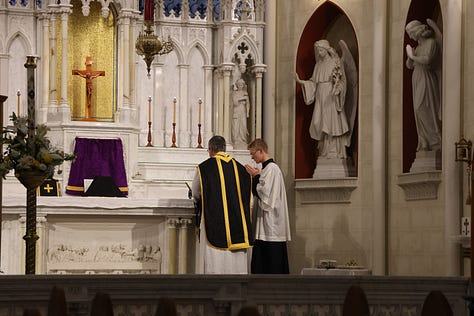
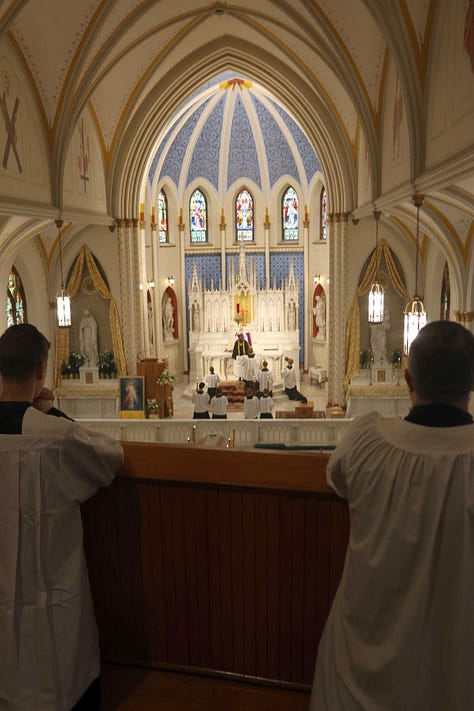
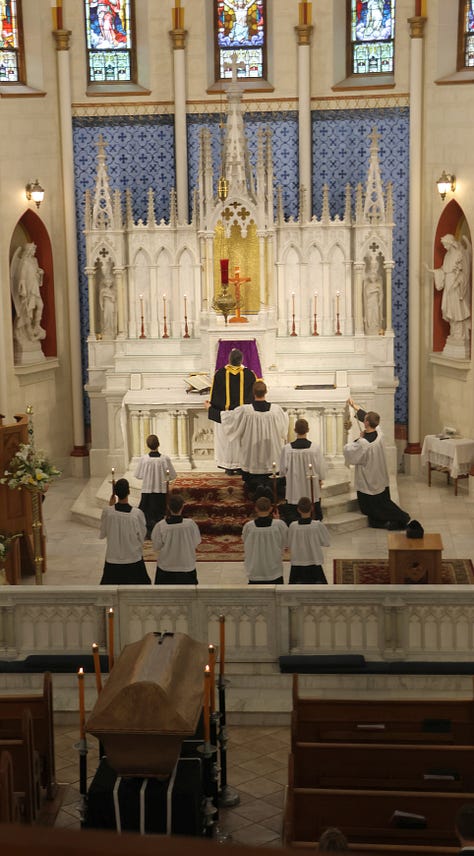
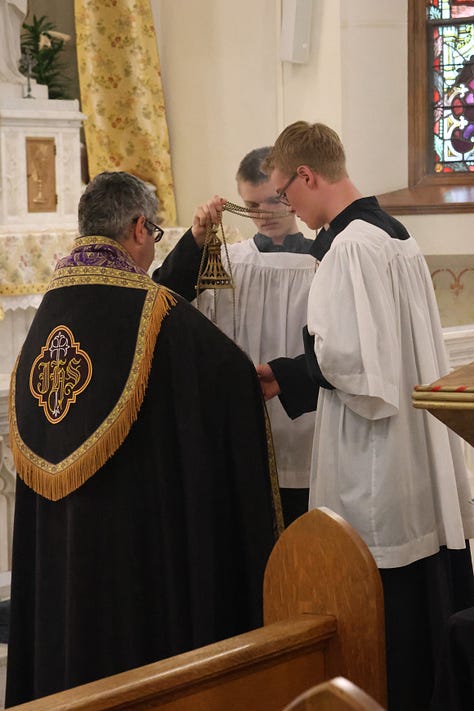
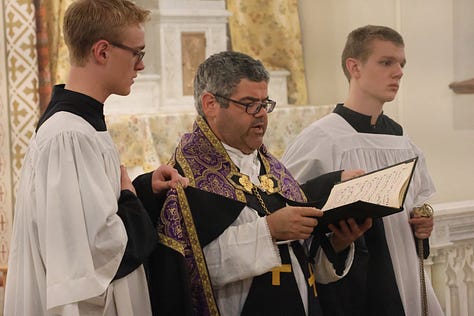
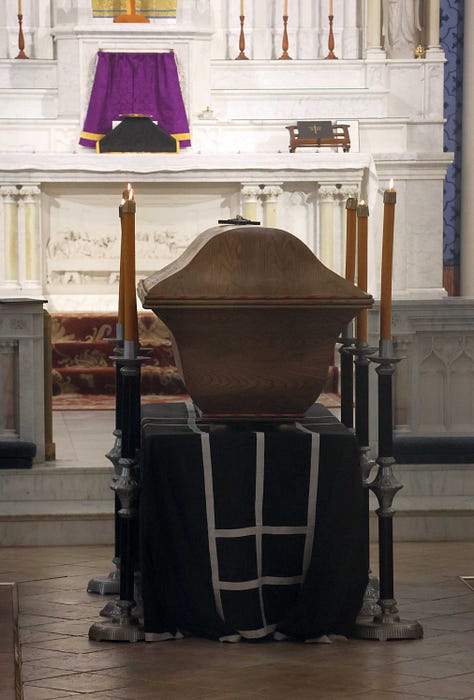
How ironic, and yet how fitting, that those around the world who are offering traditional Latin Requiems for the pope will be praying both more expressly and more extensively for his soul, since the Novus Ordo Mass for the dead has obliterated references to the soul of the departed and stripped away most of the content of the Requiem, either de jure or de facto.
Among those paying attention, there has never been any doubt as to which of these rites is truly the “unique expression of the Roman Rite.”
A Short Pilgrimage
The same day as the pope’s funeral, Saturday, April 26, a small group from our FSSP oratory made a 22-mile pilgrimage, starting with early morning Mass at St Francis of Assisi church in Lincoln NE and ending at the Carmel of Jesus, Mary, and Joseph in Valparaiso, arriving in time for Vespers. We did the pilgrimage for several intentions — one of them the repose of the soul of Pope Francis on the day of his funeral, and another, for the conclave and election.
Although I’ve never walked 22 miles straight, I found it pretty doable until the last few miles, which were miserable. But it's something to offer up, right? At least we had the diversion of catching a kid so excited to see us passing by that it slipped under the electrified fence and ran out to meet us! We gently put it back into the pen and hoped it wouldn't pull the same stunt again. “Et ab haedis me sequestra...”
After dinner, I went to bed and slept for 11 hours, which made me late to schola practice this morning! Quasimodo Sunday indeed.




Further Reactions to the Legacy of Francis
In recent days, and sometimes in the past, I’ve seen people say things like “Let’s cut Pope N. some slack, because the papacy’s an impossible job.”
No.
It’s only impossible when it's inflated past what any human being can do or should be expected to do: constantly interfere with lower levels of governance (against subsidiarity), travel to every country on the globe (except Argentina this last time around), address every possible topic under the sun and any imaginable group of people. This is a recipe for scatteredness, superficiality, magisteriumitis, burnout. It opens up many ways for court sycophants to take advantage of the constant flow of activity to insert their own projects and priorities.
A pope has two jobs and only two jobs.
He appoints bishops (at least in modern centuries), and he intervenes, if necessary, in doctrinal controversies, when a judgment is demanded. Everything else can be delegated.
A pope who limited himself to just these two tasks and did them well, carefully selecting trustworthy collaborators, would, in fact, have a more profound influence on the Church, both short-term and long-term, than a pope of constant traveling, logorrheic documents, and one meeting after another.
How much the pope, for his own sanity, and the Church, for its own health, needs a minimalist papacy that does its limited job to near-perfection! It has been a long time since we’ve seen anything like that. Any chance it could return?
No one should be surprised that the tributes, or more often, critiques, of the late pope continue to pour in. I will share the best I saw from the past week.
Dan Hitchens
Of all the articles that have been written so far on Pope Francis, Hitchens’s “The Last Modern Pope” is the one I enjoyed the most — and most wish I could have written myself!
Bishop Barron
As one might expect, the impresario of Word on Fire writes a mostly positive piece on Francis for First Things, but it is not without its cautious criticism, and that, in itself, is telling. Indeed, he was scolded by none other than Mike Lewis of Where Peter Is, which means he at least got close to the bullseye! Barron:
I believe it is fair to say that his rhetorical venom was, more often than not, directed at conservative Catholics. Here are a few more zingers: “the closed, legalistic slave of his own rigidity”; “doctors of the letter!”; “Rigidity conceals the leading of a double life, something pathological”; “professionals of the sacred! Reactionaries”; and, most famously, “backwardists.”
I know that these withering criticisms often deeply discouraged orthodox Catholics, especially young priests and seminarians, whom the pope once referred to as “little monsters.” On one occasion, during the first session of the Synod on Synodality, the pope spoke to the assembled delegates. This sort of direct papal intervention was extremely rare, for, to his credit, the pope did not want excessively to sway or dominate the discussion. He spoke, in a sarcastic tone, of young clerics in Rome who spend too much time at the clerical haberdashery shops, trying on hats, collars, and cassocks. Now, there may indeed be some immature priests and students who are preoccupied with such things, but it struck me as exceedingly strange that this was the topic the pope chose for this rare opportunity to address some of the top leadership of the Church.
To me, it indicated a curious fixation on, and demonization of, the more conservatively minded. And what made matters even more mystifying is that Francis had to have known that the Church is flourishing precisely among its more conservative members. As the famously liberal church of Germany withers on the vine, the conservative, supernaturally-oriented church of Nigeria is exploding in numbers. And in the West, the lively parts of the Church are, without doubt, those that embrace a vibrant orthodoxy rather than those that accommodate the secularist culture. Many of the pope’s expressions and stories were indeed funny, but one would be hard pressed to characterize them as invitations to dialogue with conservative interlocutors.
Simon Caldwell
Less stifled by audience expectations is a writer for The Conservative Woman, in a piece called “Francis, the Pope who alienated good Catholics”:
For Francis, the mainstream media have only praise. The reason for this is that they judge popes in purely secular terms. They like what they see in Francis so much that they have effectively canonised him as one of their saints – as a pope of the people and the poor, a reformer and moderniser, a pope for women, gays, the environment, for people of other faiths. But look more closely, and one will see not a pope of the people, but of the elites, not of the poor but of political systems which perpetuate poverty, a pope not just of migrants but of mass migration, even at the price of what is left of Christian Europe. Take the 2016 murder in Rouen, France, of Fr Jacques Hamel, whose throat was slit by Islamists as he stood at the altar. Afterwards, Francis refused to attribute specific religious motivation to the atrocity. ‘I don’t like to speak of Islamic violence,’ he told journalists. ‘There are violent Catholics!’ True, but in the cold-blooded butchery of Fr Hamel, there was a distinction that Francis had deliberately failed to make.
Msgr. Richard Antall
“Grieving for the Holy Father”:
I think Pope Francis was no theologian and his “model” of the papacy had serious flaws. I would hope that the Conclave would include some men who realize that the conception of the papacy as a fountain of omnipresent chatter on social media and perpetual news feeds is not necessarily the best way to lead the Church. It is said the pope considered himself the parish priest of the whole world. Leaving aside that he had never been a parish pastor, this has some weaknesses. The first of these is that it goes against the principle of subsidiarity and the second of collegiality.... He never said “L’eglise c’est moi,” a la Louis XIV, but he acted like it.
Clemens Victor Oldendorf
“On the Way to Emmaus and Back”:
The experiment of a Jesuit pope has shown us its limits. With some distance, these limits will even reveal the failure that is almost inevitable when a member of a religious order who has taken a fourth vow of special obedience and loyalty to the pope himself holds the office of pope. It does not help if, like Papa Bergoglio, he adorns himself with the name of the poor little man from Assisi, who, incidentally, also sought a special relationship of closeness and loyalty to the Lord Pope in Rome, but expressly wanted his brothers not to hold positions of honor in the Church.
Of course, there have also been bishops, cardinals, and popes from the Franciscan Order in later times. Sixtus V (1585-1590) continued to wear the rough and not easy habit of the Friars Minor under his papal vestments, with the rich and heavy liturgical vestments over it when necessary. This was only discovered after his death. In this way, he concealed his personal humility and love of poverty under the dignity of the office of Peter, without detracting from its external splendor and charisma. The strategic approach of the Jesuit Francis appears to be in sharp contrast to this.
In the Basilica of Santa Maria Maggiore, which Francis chose as his final resting place, lie Sixtus V and Honorius III (1216-1227), who was closely associated with the beginnings and first praise of the Franciscan movement; Nicholas IV (1288-1292), the first Franciscan to be elected pope; Pius V (1566-1572), who is well known in traditional circles; and, since the turn of the 17th century, Popes Clement VIII (1592-1605), Paul V (1605-1621), and Clement IX (1667-1669). It might have been more beneficial for the Church and also for Francis himself if he had sought common ground with these successors of Peter during his lifetime.
Paul Kengor
“Never Forget: Pope Francis on Covid”
Francis’ Covid remarks were some of the worst and most shockingly ill-informed statements of a 12-year papacy of chaos and confusion that left many of us pope-splainers and defenders frustrated, angry, exhausted. I went through that painful process with my many writings on Covid.... I wrote so often on the subject because of my medical background. I did work in immunology for the organ-transplant team at the University of Pittsburgh under Dr. Thomas Starzl, the man who pioneered the procedure. And I most certainly don’t oppose vaccination....
Returning to the point: The pope said that we had a moral duty to get vaccinated. And with that, Mr. and Mrs. Catholic, your religious appeals were dead. Alas, take the shot and accept the moral and physical consequences, or lose your job, get kicked out of the military, get booted from your college. Francis labeled you a moral failure and threat to your fellow man. You were not loving your neighbor....
It must be underscored here that the pope’s top American enforcer in this campaign was Cardinal Blase Cupich.... He pressured the bishops and National Catholic Bioethics Center to go against their informed understanding of the Church teaching on conscience....
What Francis and the likes of Cardinal Cupich did was catastrophic to the cause of conscientious objection that the Roman Catholic Church had long so beautifully championed. It should not be forgotten.
Stuart Chessman
As we’ve come to expect, the principal writer for the blog of the Society of St. Hugh of Cluny, Stuart Chessman, brings his cultured and wide-ranging mind to the last pontificate and offers a perceptive synthesis:
The result of the 1960s revolution in the Church had been to institutionalize a regime that on the one hand repudiated the Catholic past to a greater or lesser degree and on the other, welcomed the secular influence of the “modern world.” This dramatic reorientation, however, preserved the existing bureaucratic structure of the Church, and indeed depended on it for its implementation....
The Jesuits were among the most aggressive in implementing “the Council” while giving it a specifically secular cast. I can recall witnessing in the early 1970s a clash between a leading Jesuit liturgist and some of his colleagues on the faculty of Georgetown University regarding the renovation of the university chapel. (There were no traditionalists active at that time!) The demeanor of the Jesuit was arrogant, confrontational and openly contemptuous of the views of his opponents. I often recalled this experience when reading of the not dissimilar demeanor of Pope Francis. And in this very year another Jesuit liturgist speaking at another of the order’s universities demanded the summary and final abolition of the Traditional Mass. In both these cases Jesuits reduce an issue to a black-and-white, purely ideological confrontation with an “enemy,” without regard to other consequences....
The innovation of Francis — the leading example of his “cunning” — is the systematic deployment of the language, images and acts of papal absolutism in the service of the revolutionary cause. (In a sense this had already happened under Paul VI, however, that pontiff was able to better disguise the nature of his authoritarian acts.)... Francis further understood the strength that the papal cult retained despite all the disorders of the post-Conciliar years. For the Pope was now widely perceived as a “visionary” expected to stamp the Church with his spiritual ideals. The pope thus assumed the status of a founder of a Catholic religious movement. This explains Bergoglio’s choice of the name “Francis.”...
Another key aspect of the Bergoglio papacy was the aggressive courting of the secular news media. This also required establishing the best of relations with the Catholic progressive forces and institutions that are allied with these media. Francis understood the great fear the higher clergy had of the media. He also understood that most Catholics got their information about the Church from the secular media. His successful media policy meant that from the beginning to the end of his papacy the words and acts of Francis were shrouded in a bodyguard of lies. For the public image of Francis often had nothing to do with the reality.
Articles on Other Topics
Book review
Robert Lazu Kmita reviews my book The Once and Future Roman Rite at The Remnant: “In Defense of the Roman Catholic Liturgy: the Definitive Monograph.”
The mere idea of the Liturgy of the Ages being “outdated” or “decrepit” is unacceptable. And the notion of replacing it is simply an abomination. To assume that for hundreds or even thousands of years, Sacred Tradition was mistaken — until, suddenly, Vatican II and its aftermath ushered in a “springtime of the Holy Spirit” that showed us everything had to be changed — is an utterly unacceptable stance.
The challenges of good music in the NOM
In my article this week at New Liturgical Movement, “Letter to a Maximalist Music Director in a Minimalist World,” I share my experiences attempting to fix the music at the Novus Ordo, and the challenges of doing so. It concludes:
You asked me for recommended reading on the history and theology of the liturgy in our times, since your own education in Catholic institutions was deficient in this area. Don’t feel too badly; there is almost nowhere in the world where liturgy is studied from a traditional point of view, or even much at all, outside of traditionalist seminaries. Most degree programs are thoroughly in the grip of the “spirit of Vatican II” paradigm, and even when they are not, any serious or systematic critique of the liturgical revolution is verboten. Having and studying the following texts will constitute a profitable introductory course:
— and the list follows.
Easter blues
In one of my favorite posts (and I love all he writes), Robert Keim explains why “Modern Celebrations of Easter Are Woefully Inadequate”:
Post-medieval western Christianity somehow lost track of Easter. Sure, the feast itself is still celebrated, and Holy Week is still taken seriously in some places, but Easter is a noonday shadow of its former self.
A sign of the times
That may be true, but at least there are some signs of Catholic life bursting outside the confines of Sunday Mass. From the Register, “The Chartres Pilgrimage Continues to Grow Amid Liturgical Tensions”:
Overwhelmed by a surge in participants, organizers of the traditional Pentecost pilgrimage from Paris to Chartres were forced to temporarily suspend registrations just a few days after opening them.
Who hates Classics?
Jaspreet Singh Boparai, “A Classsical Insurgency”:
Fashionable Parisian atheists in the eighteenth century were the first to realize that if Latin and Greek were eliminated from schools, along with the texts that these languages enabled students to read, then they could fill the void with texts that indoctrinated the young into their own ideology. This proved a remarkably successful strategy. Enemies of classics aren’t attacking the languages of Pontius Pilate’s sign; they’re trying to obliterate the truth it proclaims, and ensure that nobody will be able to read it. Their beef isn’t with the Latin, but the man beneath it—the one nailed to the cross. This is why so many classicists have participated enthusiastically in the destruction of their discipline: they too want to see Jesus Christ dethroned.
Beethoven the Catholic?
I’m so glad someone has written a book about this. Richard Bratby reviews Nicholas Chong’s The Catholic Beethoven:
Chong ... in this scholarly, lucid, and quietly courageous book ... sets out to examine the evidence for Beethoven’s faith, and in doing so, tactfully but conclusively dismantles one of the most enduring elements of the “Beethoven myth”: his (supposed) estrangement from Catholicism. “Beethoven’s religious outlook was indeed much more inclined towards the Catholic Church than most accounts have proposed since the middle of the nineteenth century,” Chong asserts. ...
Whatever else he might have been, Beethoven was not a man who dismissed or disregarded current religious thinking. Instead, Chong shows a lively and knowledgeable engagement with contemporary—and specifically Catholic—religious thought. ...
Chong points out that the dark, chromatic orchestral Präludium before the Benedictus [of the Missa Solemnis] directly echoes the organ improvization that traditionally occurred in church during the preparation of the Eucharist; he notesthat Beethoven’s sublime violin solo (which follows immediately, at the start of the Benedictus) descends from the heights at the very moment in which the elements would be consecrated. The violin, in its intense purity and sweetness, represents the presence of Christ at the instant of transubstantiation. This is emphatically not music created in isolation from its ecclesiastical context; rather, it’s the work of a composer with a real and sympathetic awareness of Catholic ritual.
Orthodox or Ersadox?
I learned a new word, “ersadox.” You can see it deployed in Dominic Cassella’s “More Orthodox Than the Ersadox: An Eastern Catholic Response,” directed at Michael Warren Davis’s recent claim that Eastern Catholics are “Ortho-lite,” so to speak.
Feminism is poison
In “The Left Has Destroyed Our Emotional Relationships,” Itxu Díaz writes:
Postmodern feminism has reached a dead end. Since Judith Butler led feminists to their demise, diluting what it means to be a woman and making it so even any man can be one, feminism has been mired in constant contradiction. This has all unfolded in an era of singular thought and cancellation, where the few feminists who remained loyal to late-20th-century ideas and critiqued queer theories have been excluded from the debate or even branded as misogynists. Thus, traditional feminism, possessed by the demons of the woke Left, has been left with only one outlet—hatred of men.
His essay well explains why no Catholic should use the term “feminism” at all, in any sense, regardless of any qualifications. It is a poisoned and poisonous term, like Nazism, Communism, and, for that matter, chauvinism. We should simply admit that words can become so laden with false meanings that they are irrecoverable.
Thank you for reading, and may God bless you!


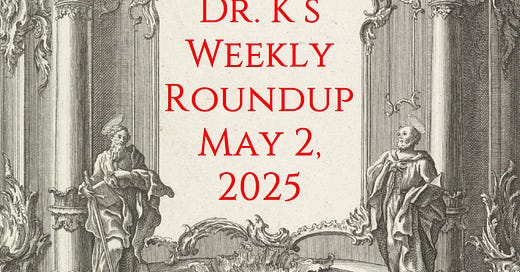




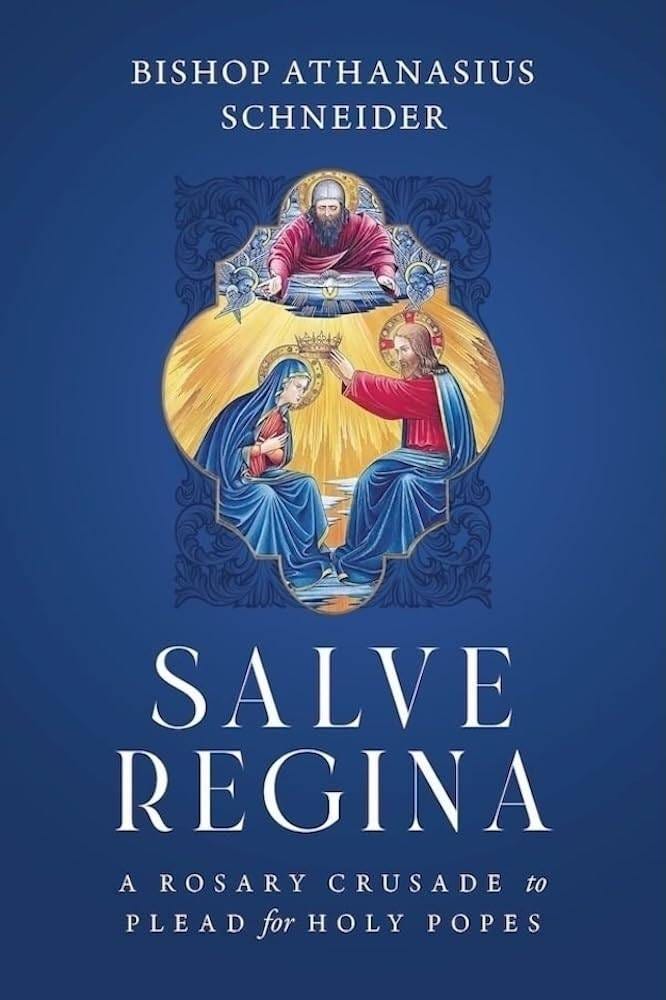
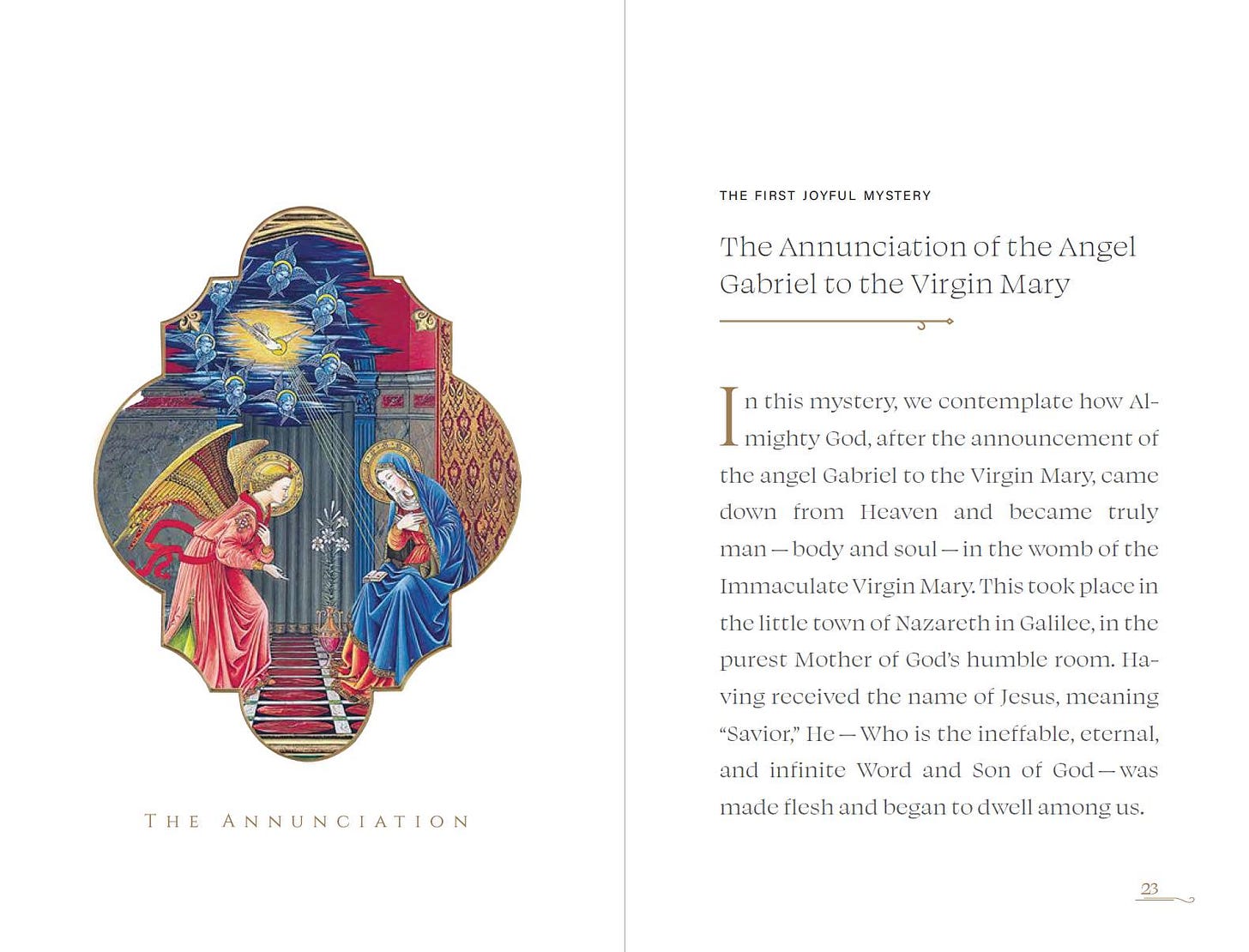
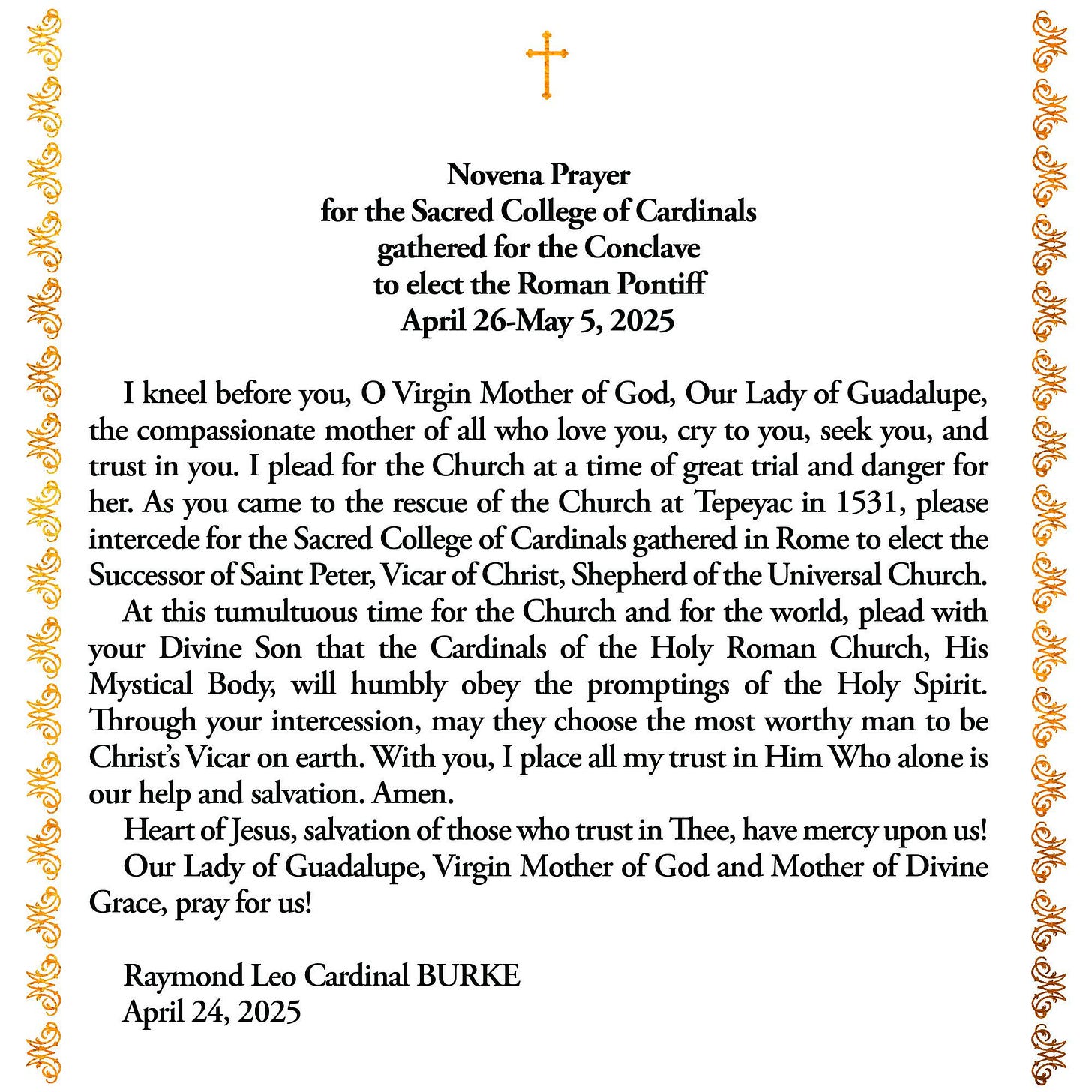
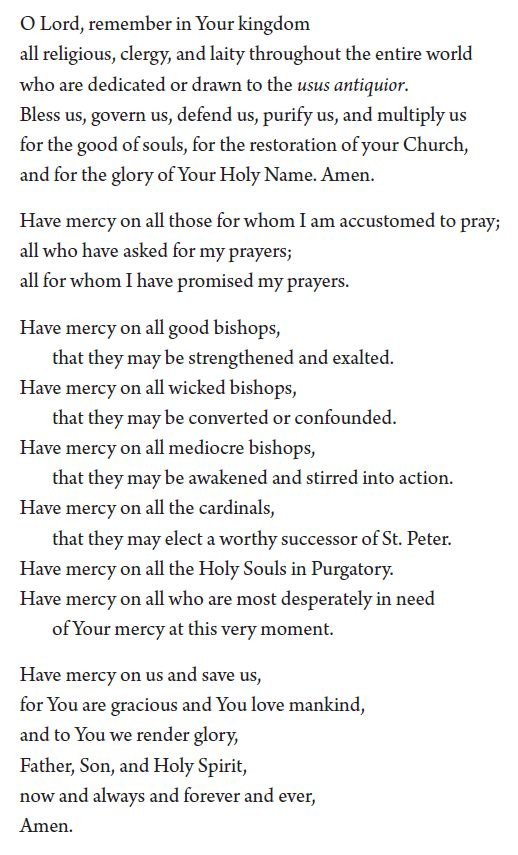
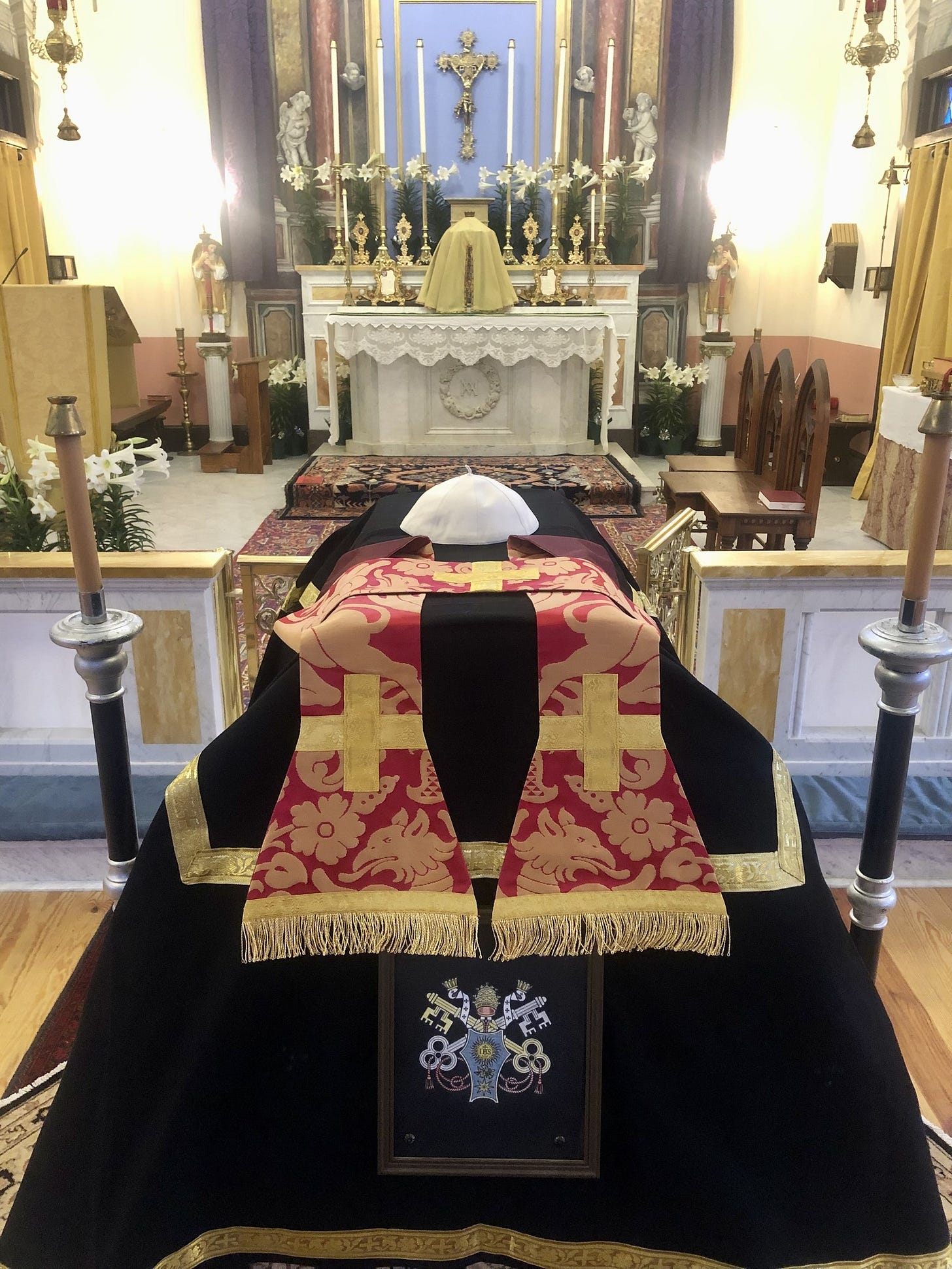

Just purchased Charles Coulombe’s The Compleat Monarchist. Funny: a book that I'm sure I wasn't on the look out for, until that is, it's waved under my nose, and becomes the book I've been waiting for forever.
I believe Fr. Heffernan is pictured in the FSSP photos. I remember him as a young, perhaps even new, priest in Seattle at North American Martyrs at St. Alphonsus.